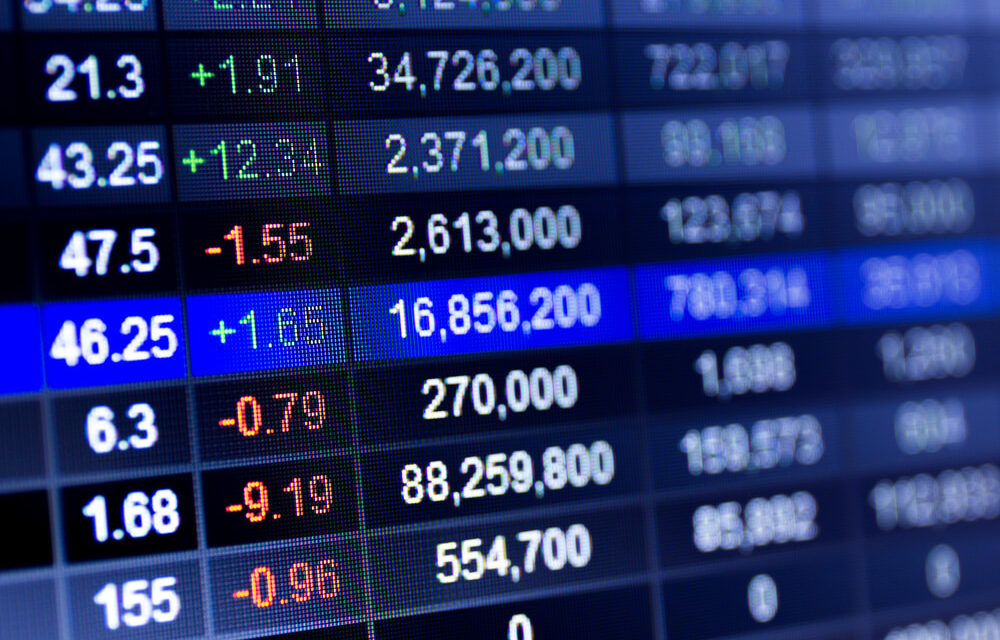Stocks closed lower to finish out one of the worst weeks of the year as traders worry that President Donald Trump’s escalating trade war with China could damage the economy and more in Friday’s Stock Market Update.
The selling picked up a day after Trump shocked markets by promising 10% tariffs on all the Chinese imports that haven’t already been hit with tariffs of 25%. China struck back Friday, saying it will take “necessary countermeasures” if Trump follows through on the new tariffs, which were set to kick on September 1.
The re-escalation in tensions between the world’s largest economies is raising worries about a global recession. Investors responded by selling stocks and buying gold. They also raised their expectations that the Federal Reserve will be forced to cut interest rates several times to cushion the trade war’s blow.
“We just ratcheted up the trade conflict and now that makes the Fed much more likely to cut,” said Randy Frederick, vice president of trading & derivatives at Charles Schwab.
Technology stocks came under the heaviest selling pressure Friday. Apple lost 2.2% and Broadcom gave back 2.4%. Communications services, consumer discretionary and energy stocks also bore a big share of the losses. Investors shifted money into bonds and stocks traditionally seen as less risky: real estate and utilities.
Safe-play stocks did relatively well as investors went on the defensive. Utilities and real estate companies rose.
STOCK MARKET UPDATE
The S&P 500 fell 21 points, or 0.7%, to 2,932. It lost 3.1% for the week. The Dow Jones Industrial Average lost 98 points, or 0.4%, to 26,485. The Nasdaq fell 107 points, or 1.3%, to 8,004.
The government released its monthly jobs report on Friday, and it’s usually a major, market-moving event. But it hewed close to economists’ expectations, showing a slowdown in hiring last month, and analysts said it was overshadowed by worries about trade and what the Fed could do about it.
The Fed has already cut interest rates once, doing so on Wednesday for the first time in more than a decade. Chairman Jerome Powell cited “trade policy uncertainty” as a major reason for it in a press conference following the announcement. But he stopped short of promising a long cycle of rate cuts, which left investors disappointed and Trump tweeting that “as usual, Powell let us down.”
The next day came Trump’s tweet on tariffs, and investors now say there’s a 98% probability that the Fed will cut rates again at its next meeting in September. That’s up from a roughly 50% probability Wednesday afternoon.
Traders see low rates as steroids for stocks and other risky investments because they make bonds less attractive in comparison. By making borrowing cheaper, low rates can also help goose the economy.
But the Fed has less ammunition than in the past to cut rates because they’re already low following years of nearly zero interest rates to get the economy going. The federal funds rate sits at a range of 2% to 2.25%, compared with the 5.25% perch it sat at before the Great Recession.
Rate cuts alone also may not be able to fully counteract the possible negative repercussions of the trade war.
Trade uncertainty has been weighing on business investment spending, and this latest escalation only adds to it. “It will be important to monitor business sentiment surveys to see whether there is a significant impact on the demand for workers — if businesses stop hiring, this would greatly increase the risk of a recession,” UBS Global Wealth Management’s Chief Investment Officer Mark Haefele said in a report.
The concerns about the trade war and Fed have also blotted out what’s been a better-than-expected earnings reporting season. Roughly three quarters of S&P 500 companies have updated investors on how much profit they made from April through June, and earnings for S&P 500 companies are on pace for a drop of 1% from a year ago. While weak, that’s still better than the nearly 3% drop that analysts were earlier forecasting, according to FactSet.
Newell Brands surged 14.2% for the biggest gain in the S&P 500 after the company behind the Calphalon, Rubbermaid and Sharpie brands reported better-than-expected profits for the latest quarter.
NetApp was the worst performer in the S&P 500 after the technology company said that it will likely report weaker results for the latest quarter than it had earlier anticipated. Its shares plunged 20.2%.
Treasury yields were mixed, and the 10-year yield fell to 1.85% from 1.89% late Thursday. It’s close to its lowest point since Trump’s election in 2016. The two-year yield held steady at 1.71%.
Markets abroad sold off more heavily in their first opportunity to trade following Trump’s tariff tweet. In Europe, France’s CAC 40 lost 3.6%, and Germany’s DAX dropped 3.1%. The FTSE 100 in London fell 2.3%. In Asia, Japan’s Nikkei 225 index sank 2.1%, the Hang Seng in Hong Kong lost 2.3% and South Korea’s Kospi dropped 1%.
Benchmark U.S. crude oil rose $1.32 to settle at $55.27 a barrel. Brent crude, the international standard, gained 88 cents to close at $61.38 a barrel.
Gold continued to climb as investors looked for safety. It rose $20.10 to $1,441.11 per ounce. Silver rose 9 cents to $16.21 per ounce and copper fell 9 cents to $2.57 per pound.
In other energy futures trading, wholesale gasoline rose 2 cents to $1.77 per gallon. Heating oil climbed 3 cents to $1.88 per gallon. Natural gas fell 6 cents to $2.14 per 1,000 cubic feet.
© The Associated Press. All rights reserved.
